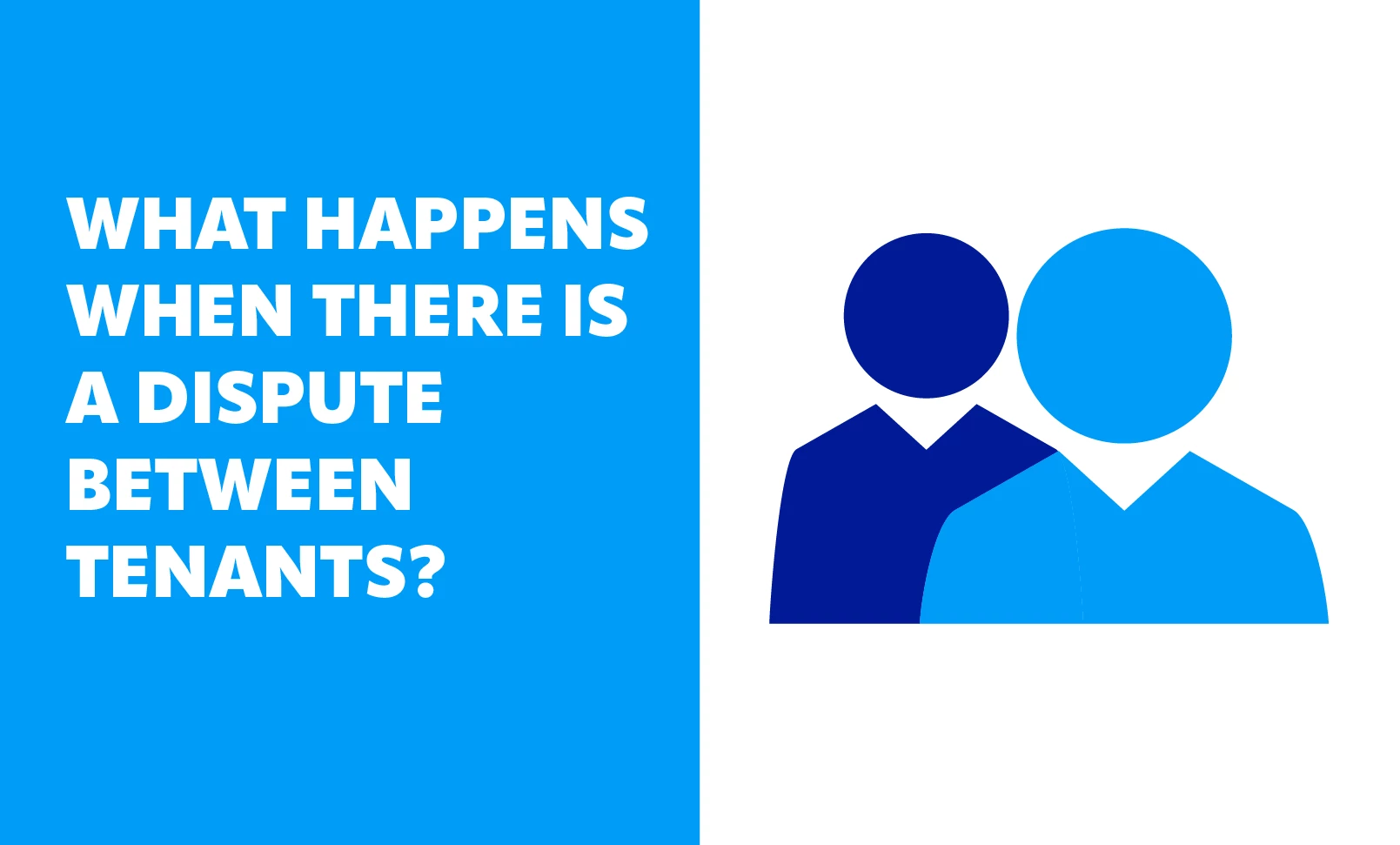Ask an Adjudicator Highlights
In December, Head of SafeDeposits Scotland Mike Smith spoke to Lead Adjudicator Sara Hesp in a live online discussion that was open to landlords, letting agents and tenants. We have compiled here some of the key questions and answers that came up in the Ask an Adjudicator session.
Q: There have been some changes to processes in terms of how people submit evidence since SafeDeposits has put its new system in place. One of the things that has changed is that we have removed the supplementary submission stage. Why do you think we don’t need the supplementary submission stage anymore?
A: Parties have plenty of opportunity and plenty of time to make their submissions to us, and to address the reasons for the dispute in the main submissions. We had the supplementary submission stage for a number of years, but it was of limited use to the adjudicator; a landlord or letting agent maybe just put in a few lines as to why they disagreed with the tenant’s submission, which was very frequently a repeat of what they had already said in their main submission.
We never accepted extra evidence at the supplementary submission stage, so we never looked at any additional evidence that was put forward at that stage as it should all have been put in as part of the main submission.
The other thing is that we try and move adjudication decisions along as quickly as we can, and the supplementary submission stage was another five-day stage so it made everything take that little bit longer. We think there is absolutely no detriment to landlords or agents in removing that particular stage, and actually if anything it is to their advantage because we see that the decisions get back to them more quickly.
Q: We will often say to people we don’t want to see bank statements when you are making a claim for rent, we want to see rent statements. What do you as an adjudicator need to see in a rent statement?
A: The beauty of a rent statement is that it can be a very simple document. It can be something like an Excel spreadsheet that you as a landlord or agent put together, that shows the date on which the rent is due, the date on which the rent is paid, the amount of rent that is due and the amount of rent that is paid, so that we can identify where the shortfalls arise.
It is very helpful if the amount that is shown at the bottom in the summation is the amount you are claiming. Something as simple as that is much preferable to a very detailed management statement or accounting statement that has all sorts of superfluous information that an adjudicator doesn’t need to see. The tenant will also be able to understand this and when they look at the evidence they will be able to see where you have said the shortfall arises, and they will be able to answer that properly.
Q: What do a good check-in and good check-out look like to you?
A: What we need to see in a good check-in report or a good inventory is a mix of both descriptive text and photographs. The disadvantage with photographs is that they don’t always show what you want them to show, or what you can see when you go into a property and you are actually looking at it. Whereas you can see layers of dust in a property, you might take a photo of that and it doesn’t necessarily show up. Similarly there might be high level cobwebs which don’t show up when you take a photograph, because of light conditions etc.
What we like to see is a check-in report or a check-out report that actually describes the cleanliness of the property, the standard of cleanliness, any cleaning issues there are, any omissions there are at the start of the tenancy or at the end of the tenancy, together with photographs that may or may not show cleaning issues. If you rely entirely on photographs to show cleaning issues, then it is very unlikely that your claim is going to be successful.
Photographs are fine as long as they are taken at a reasonable angle, they show the issue that you are complaining about, and they are most useful when they are taken from the same angle at the start and end of the tenancy so an item can be clearly compared. For example, if you have a chipped worktop at the end of the tenancy and you have taken one photograph at the start which shows the whole kitchen and the adjudicator is unable to see whether or not a worktop is chipped at the start of the tenancy, then it is unlikely that you will get any award.
By comparison if you have a check-in report that says the condition of the worktops was good and without defect at the start of the tenancy, and a worktop was chipped at the end of the tenancy then the evidence is there for the adjudicator to make an award. That is why it is really important to have descriptive evidence, text evidence and the written word as evidence, rather than just relying 100% on photographs. The best evidence is a mix of both, because particularly at check-out it is useful for the adjudicator to be able to see the extent of any damage: how big is that chip on the worktop? Is it fair wear and tear? Or is it something more significant than that? You have to put forward the evidence for the adjudicator to make a reasonable decision.
Q: What would be the best way to evidence the level of cleaning in a check-in report?
A: You are perfectly at liberty to be able to make an overarching statement. We see many inventories with overarching statements that say “unless otherwise stated the property is in clean condition” and that is fine. It doesn’t show that the property has been professionally cleaned, it just shows that it is clean. It is better to comment in detail on each individual item or each individual room because there might be differences between each individual item and each individual room. For example, you might want to comment particularly on the cleanliness of carpets of the cleanliness of the oven because those items are quite expensive to clean.
Q: What about evidencing smells, or the fact that a property is odour-free? How is that put on an inventory?
A: Again an overarching statement is fine. At the start of the tenancy you can say that the property is free from any odour and then if there is an odour at the end of the tenancy from, for example, the tenant smoking or from a pet you can evidence that in the check-out report and we have something to compare that to at check-in.
Q: Why is it that an adjudicator will only award a partial amount for damage to a worktop when the full thing is going to need replaced and it is not possible to repair according to the contractor?
A: If an adjudicator is looking at the case they are looking at reasonableness for the parties, so they won’t necessarily settle at replacement of all worktops being justified. It might be that they consider that only one part of the worktop needs replacement, or it might be that they consider that the worktops don’t require replacement at all, and that is generally based on the evidence that is submitted.
If you have a laminate worktop and there is just a mark on it and the laminate isn’t breached at all, if we can’t see the underlayer of the worktop, then we are likely to say that the worktop still retains its functionality and therefore doesn’t need replacement – we will make an award for cosmetic damage. But it is a matter of nature and extent – we look at each case on its own merit and based on the evidence that we have available to us.
Q: How do you approach betterment as an adjudicator?
A: In very simple terms, the landlord shouldn’t benefit at the end of the tenancy at the tenant’s expense, so the landlord shouldn’t receive back the property from the tenant in an improved condition compared to the way it was at the start of the tenancy.
For example, if the tenant moved into the property five years ago and the carpet was already five years old, and they spill a glass of wine on the carpet during the tenancy the landlord cannot expect the tenant to replace that carpet with a new carpet. They might replace the carpet at the end of the tenancy but that carpet will still be discounted in terms of an award to take into account its age and condition at the start of the tenancy, so the award that you actually receive might be quite small. The carpet might have been at the end of its lifespan at the end of the tenancy and the landlord might reasonably have been expecting to replace it as part of their normal maintenance cycle when the tenancy ended.
There are a number of factors that the adjudicator will take into account. They will take into account the age, quality and condition of the carpet at the start of the tenancy; if you don’t provide evidence to establish that then the adjudicator will make a reasonable judgement as to that. They will also consider the amount of fair wear and tear over the course of the tenancy and whether the damage that is evidenced at the end of the tenancy is likely to have resulted because the tenant breached their obligations under the tenancy agreement – i.e. as a result of neglect, negligence or misuse in some way.
Q: We sometimes get asked by people if they can speak to the adjudicator, and our answer is no. Why don’t we allow that?
A: Because we are independent. We are omni-partial, which means we don’t favour anyone but we take everyone’s views into account. We are not favouring the landlord, we are not favouring the tenant. If we spoke to the landlord or we spoke to the tenant, then we would have to make sure that we did so in the presence of each of them so they could hear what went on – that is turning into a court and we are not a court, we are a quick resolution process.
Q: When you see a submission from a landlord or agent, do you want to see that they have factored in fair wear and tear and betterment?
A: They don’t have to mention it. The adjudicator is quite well equipped to be able to tell whether they have factored that in to some extent when they make the claim. For example, if someone has put an invoice in and the amount they have claimed is different then the adjudicator can make an assessment of that. Having said that, it is always useful if someone says they have taken account of their opinion of fair wear and tear and betterment when they have made their claim.



